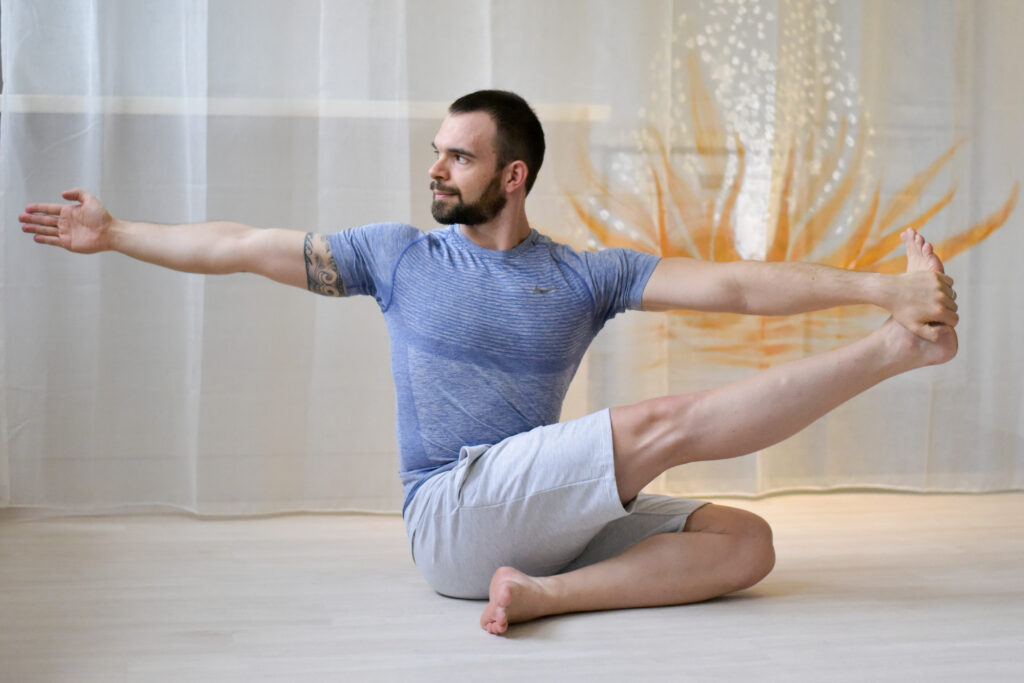
Original article published on IMI (19/05/2022) – From an interview, wrote by Angela Kaur Baura.“
Yoga is an ancient philosophy with a multitude of benefits. Connecting body and mind with breath, yoga builds muscle strength, improves flexibility, protects your spine, helps you focus, releases stress, relieves pain… the list goes on.
Whether you’re a newbie or a passionate yoga practitioner, all of these benefits and more can be attained if you practice yoga with awareness – with ahimsa (nonviolence: the first principal of yoga).
If we do not practice with awareness; if we ignore pain, soreness, or breathlessness; if we push beyond our limits to perfect the pose, we may not reap the benefits of yoga. Instead, we might risk musculoskeletal injury that can keep us off the mat for months.
This is proven by research published out of the University of Sydney in 2018. In a survey of 354 people conducted over a one-year period, 74% of participants reported that yoga improved existing pain – lower back pain, neck pain, and more. But, 10% of participants reported having new musculoskeletal pain – in their hand, wrist, shoulder, or elbow; and 21% said pre-existing injuries were made worse by yoga, particularly in the upper limbs, such as shoulder pain.
Yoga, itself, does not cause harm. We’re all different, and a yoga posture (asana) that might be helpful for one person may be harmful for another. Yoga allows us to feel different body parts – its restrictions and relaxations – in full awareness. It’s up to us to accept what we find. With ahimsa in mind, we respect our body totally, with kindness and without criticism, no matter how flexible or strong we may be at any given time. Whilst we challenge ourselves to grow, we pace ourselves, modify our practice for any physical limitations, and do not force our bodies into postures that do not feel right.
With awareness comes positive action. If you want to progress safely in your yoga practice at a pace that’s appropriate for your body, osteopathy can help. Osteopathy is a manual practice with the therapeutic objective of restoring the mobility and motility in your tissues, ligaments, muscles, joints, and viscera.
Yoga and osteopathic medicine are intimately linked. Both practices aim to rebalance your whole being: mind, body, and spirit. They are both science and art because they require an intricate understanding of the anatomy, physiology and biomechanics of the human body. In fact, Master yogi BKS Iyengar qualifies yoga as an art, science, and philosophy. And it is in these same terms that, at the end of the 19th century, the founder of osteopathy, Andrew Taylor Still described osteopathy.
When you combine yoga and osteopathy, you benefit from a powerful and empowering partnership. Together, they improve balance, strengthen muscles, calm your mind, and prevent injuries from occurring or becoming worse.
As you become increasingly aware and accepting of your body through yoga, you become attuned to blockages and restrictions in your joints, muscles, or tissues. You may feel resistance, reduced mobility, or pain when you practise a posture, which can prevent you from moving forward. In full awareness, you can anticipate and adopt a preventive approach, so niggling pain and dysfunctions don’t become entrenched health issues.
Aligned with the way yoga works the muscles, the stretching, gentle pressure and resistance techniques adopted by osteopaths help to release blockages and bring your body back into balance. An osteopath with advanced knowledge of yoga can draw on their wisdom of both practices to help modify and add more beneficial movements and poses to protect your spine and musculoskeletal structure as you progress in your yoga practice.
With the awareness of your body that comes with yoga, you may feel the difference in your during osteopathy treatment, making you an active participant throughout the process. And when you return to the mat, your movement will be more fluid and your body more at ease.
Equally, if you consult with an osteopath because you’re suffering with health issues ranging from chronic pain to gut issues, they can diagnose, treat, and prevent injury or illness. Yoga is ideal to prolong the effects of osteopathy through your own practice. Again, an experienced osteopath and yogi can offer guidance on appropriate postures to enhance your healing, deepen your practice, and protect against further injury.
We wish you well on the mat.”